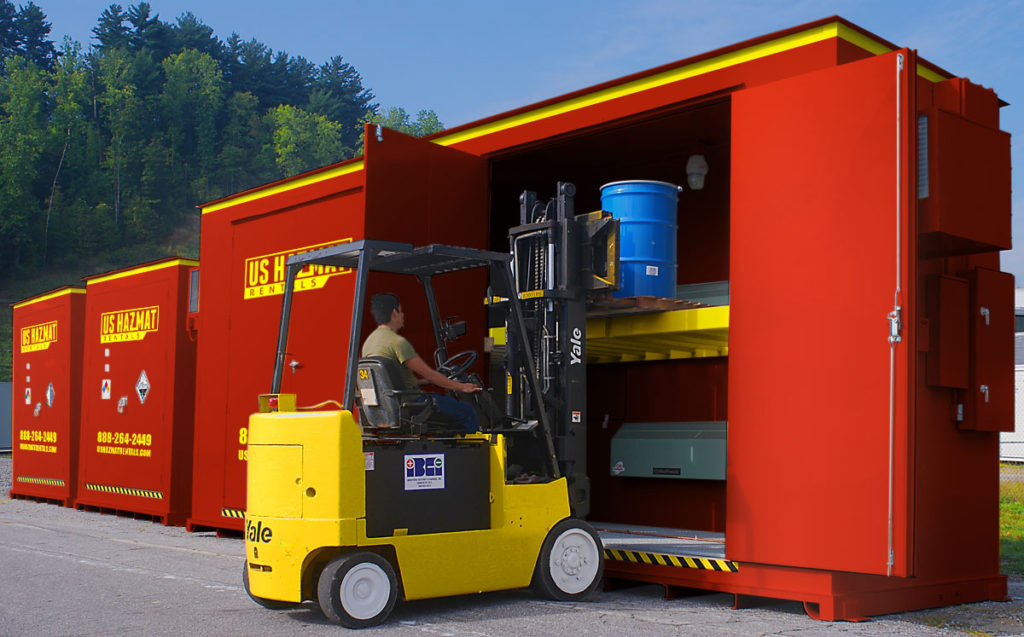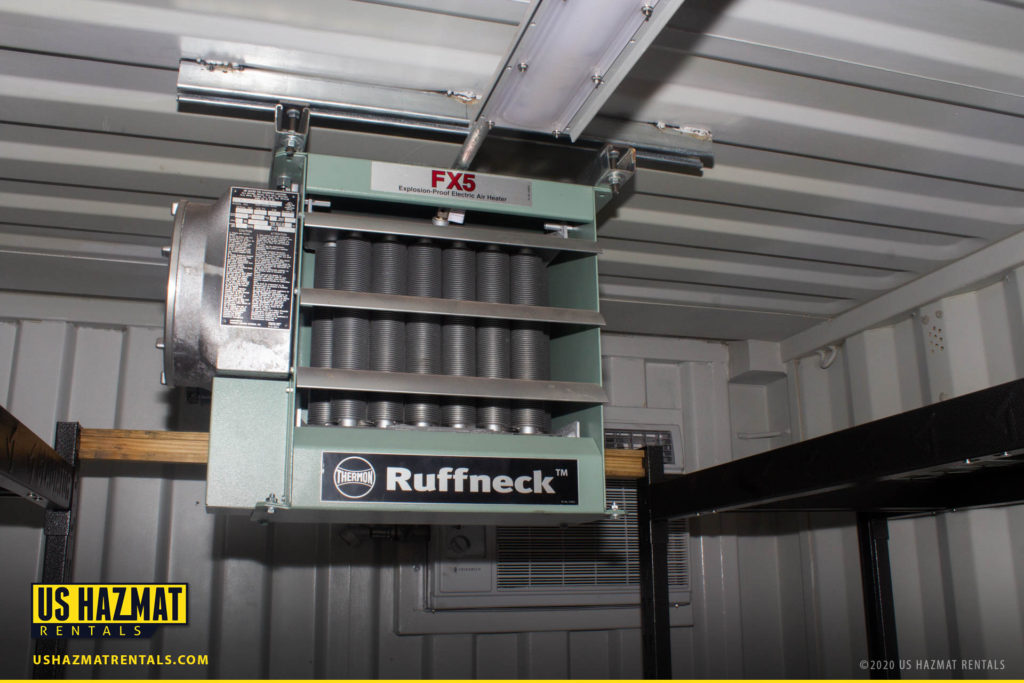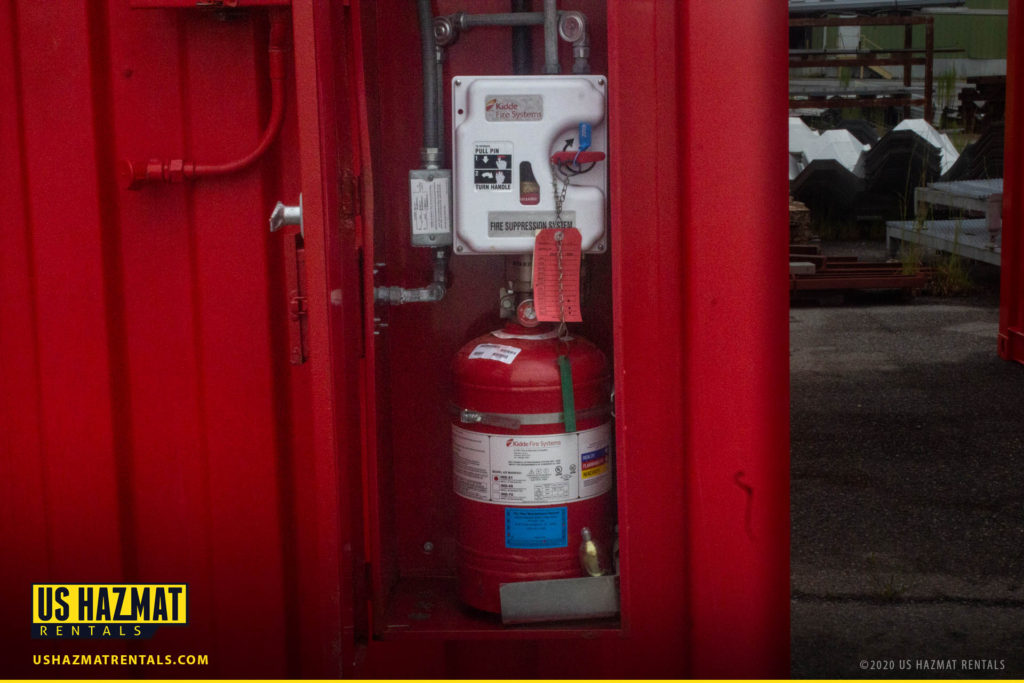Industrial adhesives are the glue of modern manufacturing. Epoxies, silicone, and mixed acrylics are like the cement of today’s assembly line and construction industry. These powerful binders create lasting bonds for computer circuit boards, structural inserts for vehicles, and flexible laminating adhesives in the food packaging industry. Improper adhesive storage can put a once thriving manufacturer in a real sticky situation. Hefty fines and a bad reputation due to careless chemical storage can stick with a company for years to come. While water based glues are chemically inert, they can still produce a sudden spark if exposed to a flame or extreme temperatures. Epoxy resin, rubber cement and spray adhesives are highly flammable and should be stored in a climate controlled chemical storage locker. U.S Hazmat Rentals’ compliant adhesive storage lockers provide isolated and compartmentalized storage for powerful epoxies and adhesives.
Air-tight welds will prevent moisture contamination and environmental exposure from leaks. Remain compliant and away from the watchful eye of the EPA with our fire-rated steel lockers for compliant adhesive storage.
What is An Adhesive? Where is it used?
The EPA defines an adhesive as any chemical compound, such as polymers that can bond two surfaces together. There are many types and applications of adhesives that are commonly found in the workplace. Below is a list of the more common industrial adhesives and applications that require steel gauge chemical protection.
- Automotive glass adhesive primer
- Ceramic tile adhesive
- Super Glue
- Epoxies
- Acrylic
- Flexible vinyl
- Fiberglass
- Laminate
- Plastic cement welding primer
- Rubber sealant
- Tire repair sealant
- Aerosol adhesives
Which Industries Use Adhesives?
- Automotive and car repair
- Welding
- Furniture and woodworking
- Paper manufacturing
- Aviation and aerospace
- Electronic component manufacturers
- Food and product packaging
- Telecommunications and electronics
How Do You Store Adhesives?

Sealants and adhesives should be stored in dry conditions and within temperatures recommended on the Safety Data Sheet. Ideally, sealants and adhesives should be stored with controlled temperatures no lower than 40 degrees or higher than 100 degrees F. Storing adhesives within this optimal temperature range will also help preserve the chemical consistency of glues and heat-sensitive hardeners. Resins and other two-component adhesives can be stored in a drum-pallet combination away from other chemicals. Adhesives should also be stored in a well-ventilated area. One-part or ‘rapid curing’ adhesives may also require a climate controlled environment that is not prone to sudden fluctuations in temperature. U.S. Hazmat Rentals can meet the complicated adhesive storage guidelines to keep your company compliant and financially solvent. Metal partitioned walls and space optimized shelving can allow your chemical storage locker to double as an adhesive mixing station. Wide-swinging doors make for the easy removal and retrieval of adhesive drums via forklift. Optional climate control will help maintain optimal internal locker temperatures so adhesives are not compromised.
What Risks Should Be Consider When Storing Adhesives?

Like any other chemical or hazardous materials, adhesives pose inherent risks to your workforce and surrounding environment. Solvent adhesives can produce toxic and potentially harmful vapors. Exposure to to solvent vapors can cause dizziness, headaches and even nausea. Rubber cements and contact adhesives can even cause peripheral neuropathy. Our fire-rated chemical warehouses are equipped with mechanical ventilation that prevents potentially dangerous volumes of solvent vapors from accumulating in the immediate airspace. Innovative spill sump containment systems come standard on any U.S. Hazmat Rentals chemical storage locker. In the event of an adhesive spill from a tank or barrel, this substance will simply pass through the steel grated floor system and into a large sump where it will remain until the adhesive can be safely removed.
Are Adhesives Considered Hazmat?

Due to potential flammability and toxicity, adhesives and sealants are dangerous to human health and are therefore considered a hazardous material. Chemically reactive adhesives such as epoxies, cyanoacrylates and anaerobic adhesives should be stored separately from other hazardous materials. Due to their potentially devastating affect on the environment and various ecosystems, many adhesives are considered to be a household hazardous waste. Under state and federal law, these items cannot be simply discarded into a landfill or garbage can. A U.S. Hazmat fire-rated chemical storage locker can store residual adhesive chemicals and used containers for an extended period of time until they can be properly disposed of. For complete protection, consider an optional fire suppression system that can quickly douse flames in the event of inadvertent spark causing a sudden fire.